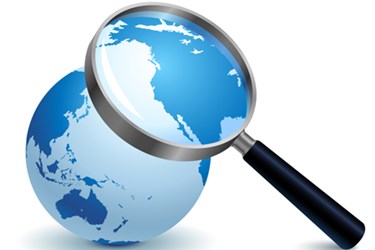Can Big Pharma Survive In A Big Biotech World?

By Rob Wright, Chief Editor, Life Science Leader
Follow Me On Twitter @RfwrightLSL

If you looked up the definition for Big Pharma, you would be surprised if the explanation was not accompanied by a Pfizer logo. The company’s rise to becoming synonymous with Big Pharma began when Pfizer recognized the pharmaceutical success paradox of the 1990s — in order to turn small molecule drugs into commercial blockbuster successes, it was better to be BIG (i.e., BIG budgets, BIG mergers, and BIG sales forces). Despite Gilead Sciences suggesting to the contrary with its small molecule smash Sovaldi, a hepatitis C drug which generated 2014 Q1 sales of $2.27 billion, the future success of Pfizer (and Big Pharma, for that matter) resides in the bastion of biotech — the large molecule.
Blockbuster Biotherapeutics
Commonly referred to as biologics, biotherapeutics, or biotech drugs, these large molecule medicines are topping the blockbuster charts. In 2013, seven of the top eight bestselling drugs are of the biologic variety (see table 1) generating a combined $58 billion. The only crasher to the large molecule revenue party was GSK, which ranked fourth with its $8.7 billion small molecule asthma/COPD drug, Advair. Now while many of you will be sure to point out that these drugs are being marketed and creating revenue for the biggest of Big Pharma (see table 1), only Sanofi can claim to have successfully developed its biologic blockbuster in-house. And while Pfizer can consider buying its way into the world of Big Biotech (i.e., trying to buy AstraZeneca’s R&D pipeline which is nearly 50 percent biologics), I wonder how much longer these opportunities will last? Why? Because biotechs have shown that not only are they better at the building of biotherapeutics, they are also no longer content to playing the role of “David” in the world of drug development, and therefore, are building their own deep pockets.
Table 1
Blockbuster Biotherapeutics
|
2013 Biotherapeutic Blockbuster Sales |
Sponsor |
Origin |
|
Humira (adalimumab) - $10.6 B |
AbbVie/Abbott |
BASF Bioresearch/Cambridge Antibody Technology |
|
Remicade (infliximab) - $8.9B |
J&J/Merck |
Centocor |
|
Rituxan (rituximab,MabThera) - $8.9 B |
Roche/Biogen Idec |
Genentech |
|
Enbrel (etanercept) - $8.3 B |
Amgen/Pfizer |
Immunex |
|
Lantus (insulin glargine) - $7.8 B |
Sanofi |
Sanofi-Aventis |
|
Avastin (bevacizumab) - $7 B |
Roche |
Genentech |
|
Herceptin (trastuzumab) - $6.8 B |
Roche |
Genentech |
Biotech’s Basking In The World Of Big Pharma
Large cap biotech’s were responsible for two of the biggest new drug approvals last year — Gilead’s previously referenced Sovaldi and Biogen Idec’s multiple sclerosis therapy, Tecfidera, both being the small molecule type normally residing in Big Pharma’s wheelhouse. One of the fastest growing and most innovative biotechs, Celgene, also has its own small molecule, Pomalyst (bone marrow cancer therapy), which seems destined for blockbuster status with the added indication of multiple myeloma. Of the top 25 drugs of 2013, eight reside wholly, or in part, with companies typically classified as biotechs (i.e., Amgen, Biogen Idec, Celgene, Gilead, Novo Nordisk, and Teva).
Clearly, Big Biotechs are gaining comfort in playing in Big Pharma’s small molecule backyard in order to build the deeper pockets necessary to create blockbusters. In addition, biotechs continue to hold the biotherapeutic keys to unlocking the potential of personalized medicine. Why then would Pfizer consider the targeting AstraZeneca (AZ) to be so appealing? Yes, I have read the tax benefit rationale. But I have also sat in the Pharmaceutical Research and Manufacturers of America (PhRMA) annual meetings where the buzz is all about protecting the United States biopharmaceutical medical innovation engine. If protecting medical innovation is so important, as well as positioning for the biotherapeutic future, would it not make more sense to take a close look at some of the Big Biotechs based right here in the U.S. (see table 2)? EU-based Sanofi and Roche found biotech gold in their respective acquisitions of U.S.-based Genzyme and Genentech. Perhaps Pfizer could do the same?
The days seem numbered for biotech and pharma to be classified as separate industries. If the way of the future is biotherapeutics, then the industry of the future is probably biopharm, biopharma, or maybe pharmabio. My vote is to name our industry of the future — Life Sciences. For, after the merging of biotech and pharma, can bringing medical devices — so key in the world of biotherapeutics — be very far behind?
Table 2
Big U.S. Biotech
|
Company |
Sales |
Profits |
Assets |
Market Value |
|
Amgen |
$18.7 B |
$5.1 B |
$66.1 B |
$95.2 B |
|
Gilead |
$11.2 B |
$3.1 B |
$22.5 B |
$113.2 B |
|
Biogen Idec |
$6.9 B |
$1.9 B |
$11.9 B |
$73.2 B |
|
Celgene |
$6.5 B |
$1.4 B |
$13.4 B |
$59.5 B |
|
Regeneron |
$2.1 B |
$0.4 B |
$3 B |
$30.7 B |
